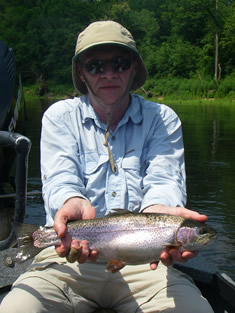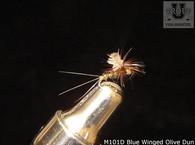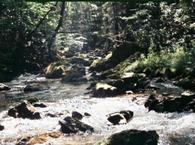Catching scores of trout makes for an enjoyable day of fishing, but nothing compares to the exhilaration of catching big trout. Listed below are several points related to catching big trout.
Definition - The term “big trout”, of course, is relative. In Alaska, where they fish primarily for salmon and consider trout junk fish, the term is a bit of an oxymoron. In the southeast US, where I do most of my fishing, many would consider a 12” long trout to be a big trout. So, for the purposes of this discussion, we will compromise and call any trout over 16” long a big trout.
Finding Big Trout Water – There are several possibilities for finding big trout. Listed below (in no particular order) are numerous places to fish for big trout:
Exotic Destinations – Catching big trout can be done all over the world. Other parts around the world are known for the biggest of the big trout. Check out our friends at Southern Cross Outfitters, for example, for superb big trout fishing in Patagonia.
The Rio Grande in Tierra Del Fuego, known for its sea-run brown trout, aka plateados, is a world-class, albeit windy destination. Additionally, New Zealand is known for giant brown trout.
Tailwaters – Tailwaters, which are rivers on the downstream side of dams, often provide great year round opportunities for catching big trout. The interesting note about tailwaters is that they “convert” rivers that are otherwise too warm to hold trout into coldwater fisheries, by drawing water from the bottom of the lake upstream. The trout in these rivers can grow big, really big. Notable tailwater fisheries include (but are not limited to) the Holston River in Tennessee, the Saluda River in Columbia, SC, the
White River and other related tailraces in Arkansas (where world record browns have been caught), the
Chatahoochee in Atlanta, and the
Cumberland in Kentucky.

Specially Managed Streams – These are waters, either with stocked or native trout, that are managed to produce large trout. They can be private streams or public streams. Often, these streams are regulated, in terms of requiring people to sign up for a particular stretch of stream on a particular day. Typically, there are fish feeders mounted above the streams at various points to disperse trout food, allowing the fish to grow to otherwise unattainable sizes. Examples of these types of streams include
Bullhead Creek in
Stone Mountain State Park in northwest North Carolina and Dukes Creek in
Smitgall Woods Conservation Area in Georgia.
Lakes – Apline lakes can often provide the growing conditions necessary to produce large trout. The trout in lakes often spend their time in very deep water, so finding them is difficult. However, at certain times of the year, large trout will leave the lake and enter streams that flow into the lake to spawn. Two lakes in the southeast that feature opportunities for large trout are Fontana Lake in NC and Lake Jocassee in SC.
“Average” Streams – Fishing most of my time in the mountains of North Carolina, especially in small streams with native fish, I thought catching big trout was a pastime for different fishers in faraway lands. However, I have come to realize that there are streams, sometimes even tiny streams that have large trout. Typically, the streams with large trout are relatively large, however. I’ve found that any stream that has brown trout in it is a stream that potentially has big trout, which brings me to my next point.
Brown Trout –
Brown trout generally grow larger than other species of trout, and as such, warrant special attention in a discussion in catching big trout. When looking for big trout water, the best water will probably contain brown trout. Brown trout often hide under rocks during the bright daylight ours. Oftentimes, the best times to catch them are during low light conditions and in water murkied by heavy rain. However, they can be caught during the day by a properly presented lure.
Techniques -Fish year round. Big trout have to eat a lot year round, to reach a large size. Additionally, wintertime fishing can be exceptionally rewarding due to the reduced pressure on the streams. The trout become less wary, and the lighting conditions improve for catching brown trout (see above). Additionally, the water in tailraces tends to remain approximately the same year round.
Maneuver yourself in position to make just the right cast and presentation. Big trout tend to hide under rocks, etc. (see above), and you will need to get present your lure in the right way in the right spot. You may have to cross the stream, fish downstream, etc. to get just the right presentation in a particular spot. Fish with streamers, large lures, or live bait, keeping them in the strike zone as long as possible. Twitch streamers and lures periodically, and hook live bait in such a way to allow the bait to move freely in the current, to entice strikes.Make the first cast into a pool/area a good one, and be prepared for a quick strike. You may only get the trout to bite once.
However, it may take numerous casts to entice a strike. Stay out of the water as much as possible, dress in drab/camouflage colors, keep a low profile, and generally fish upstream. Fish water that other people don’t know about, aren’t willing to get to, at times they’re not willing to go.
To sum it up: slow down!






